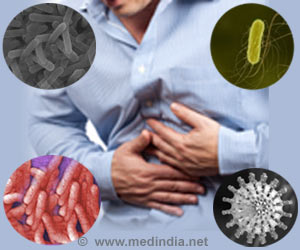Using a harmless strain of E.coli called Nissle 1917, researchers have successfully used the bacteria as a diagnostic tool to detect liver cancer and diabetes.

The researchers said, "The animals that were given the engineered bacteria did not exhibit any harmful side effects. With the E. coli test we were able to detect liver tumors larger than about one cubic millimeter, offering more sensitivity than existing imaging methods."
Study author Sangeeta Bhatia, a professor of health sciences and electrical engineering and computer science at the MIT said, "This kind of diagnostic could be most useful for monitoring patients after they have had a colon tumor removed because they are at risk for recurrence in the liver."
In the second study, researchers at the University of California at San Diego engineered E. coli to detect biological signals in urine and, at a specific threshold, generate a visible color change. They demonstrated their so-called bactosensors in urine samples from diabetic patients and found that they accurately and reliably detected abnormal glucose levels in urine, performing almost as well as current standard urine dipsticks.
Both papers were published in the Science Translational Medicine.
Source-Medindia















